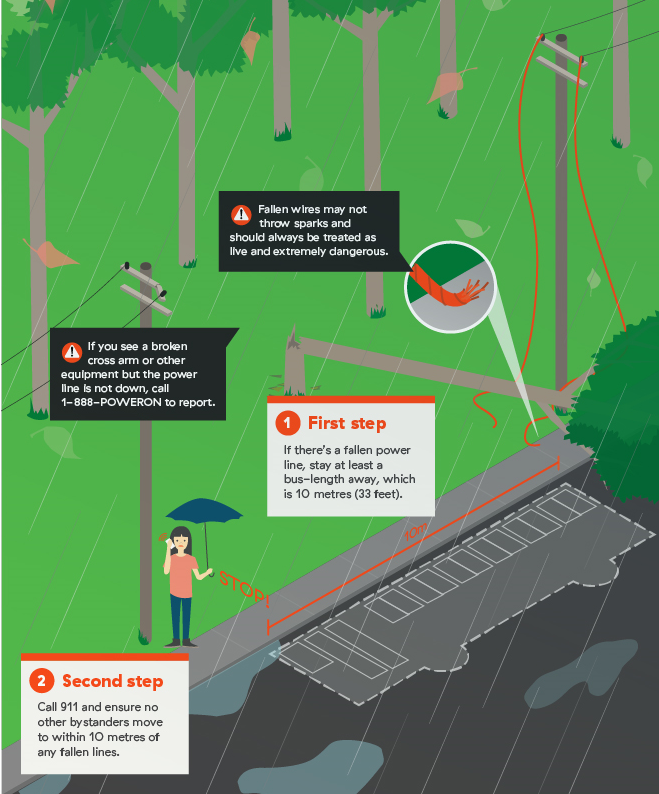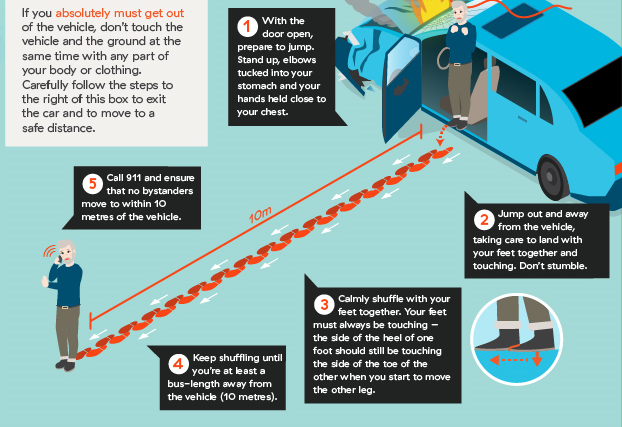How is it that birds can sit on power lines, but we need to stay 10 metres away?
At BC Hydro, we learn a great deal about the dangers of working near and with high-voltage electricity, and the important safety precautions that our crews need to take when working near these lines.
So how is it that birds can perch and snooze on power lines while Power Line Technicians require special training, tools, and processes to keep themselves safe.
For an answer, we went to a guy who really knows his electricity science, University of BC professor William Dunford.
A member of UBC’s electrical and computer engineering faculty, Dr. Dunford explains that if we could fly, and were as small and light as a bird, we could get away with sitting on a power line, too.
"The advantage that birds have is that they are already far from the ground when they land on the wire, so there is no path nearby for the circuit to be completed," Dunford told BC Hydro’s Chelsea Watt in a 2015 interview.
He explained that a person standing on the ground and touching a power line, such as a power line technician, would be in danger of completing the electrical circuit unless they were using special tools and procedures.
Electricity runs to ground, and you don’t want to be part of that circuit
Electricity seeks a pathway to the ground and always takes one with the least resistance. Safety around power lines for the general public is all about ensuring that a person never becomes part of that electrical path.
That’s why BC Hydro regularly warns the public to always stay clear of power lines, especially when doing work in a back yard adjacent to power lines. And it’s why you must always assume that a power line – even when knocked to the ground by a vehicle accident or by a tree in a storm – is energized and dangerous.
When electricity finds a path to ground through a tree, a car, or an energized pole, it creates an area known as a gradient. If you were to walk across that area, you could be exposed to thousands of volts over the distance of only a footstep. The moment your feet separate, you run the risk of creating a circuit for electricity surging through the ground to move up one leg, through your body, and back down to the ground.
Always stay at least 10 metres from a downed power line, and once you’re safely clear, call 911.

Your car hits a power pole and power lines come down. Are you safe?
Always assume that any vehicle involved in an accident involving a power line is energized with electricity. Fallen or broken power lines may be energized, even if they're not sparking, smoking or making a buzzing sound.
If you’re in that situation, stay in the car, and wait for help, unless the driver can safely back the car at least 10 metres away (the length of a bus) from the power lines. If you absolutely must leave the car (such as when the car’s on fire), you need to first remove any loose clothing, open the car door, tuck your elbows to your sides and place your hands to your chest, and jump clear of the car, taking care to not touch any part of the vehicle and the ground at the same time. Land with your feet touching each other. You then shuffle, heel to toe, until you are at least 10 metres away, always ensuring your feet are touching.

Even birds aren’t safe if a circuit is completed
A bird sitting casually on a power line is usually safe. But there are exceptions. If the bird touches another wire, or any part of the pole, it can cause a short circuit with disastrous results.
"I heard stories of African birds with big beaks sitting on adjacent lines and making the mistake of letting their beaks touch," Dunford said of one unexpected way that circuits can be completed. That's the same reason you won't see birds straddling two different lines.
How a reindeer herd in Norway died during a lightning strike
Back in 2016, more than 300 reindeer were killed by a single lightning strike in Norway. A wired.com story on that incident – which includes a photo of some of the dead reindeer - did a deep dive into the science of how that happened.
The article explains that when current is flowing through the ground following an accident (or lightning strike), the step potential is the difference in voltage between the points contacting the ground; in this case, the reindeer's legs. Because the voltage at each "step" is different, it causes the current to continue flowing from one leg to the other. For these reindeer, this path caused the current to travel straight through their hearts, killing the poor creatures instantly.
"This situation is exactly why we remind people to shuffle with their feet together as they move away from the downed line – taking normal steps will cause a step potential, and result in electricity flowing through you, possibly causing harm," said Jonny Knowles, BC Hydro's public safety lead, after the incident in Norway. "Also, you can't be too sure how far the current has travelled from its point of origin, so it's best to continue shuffling and move at least 10 metres away from the fallen line."








